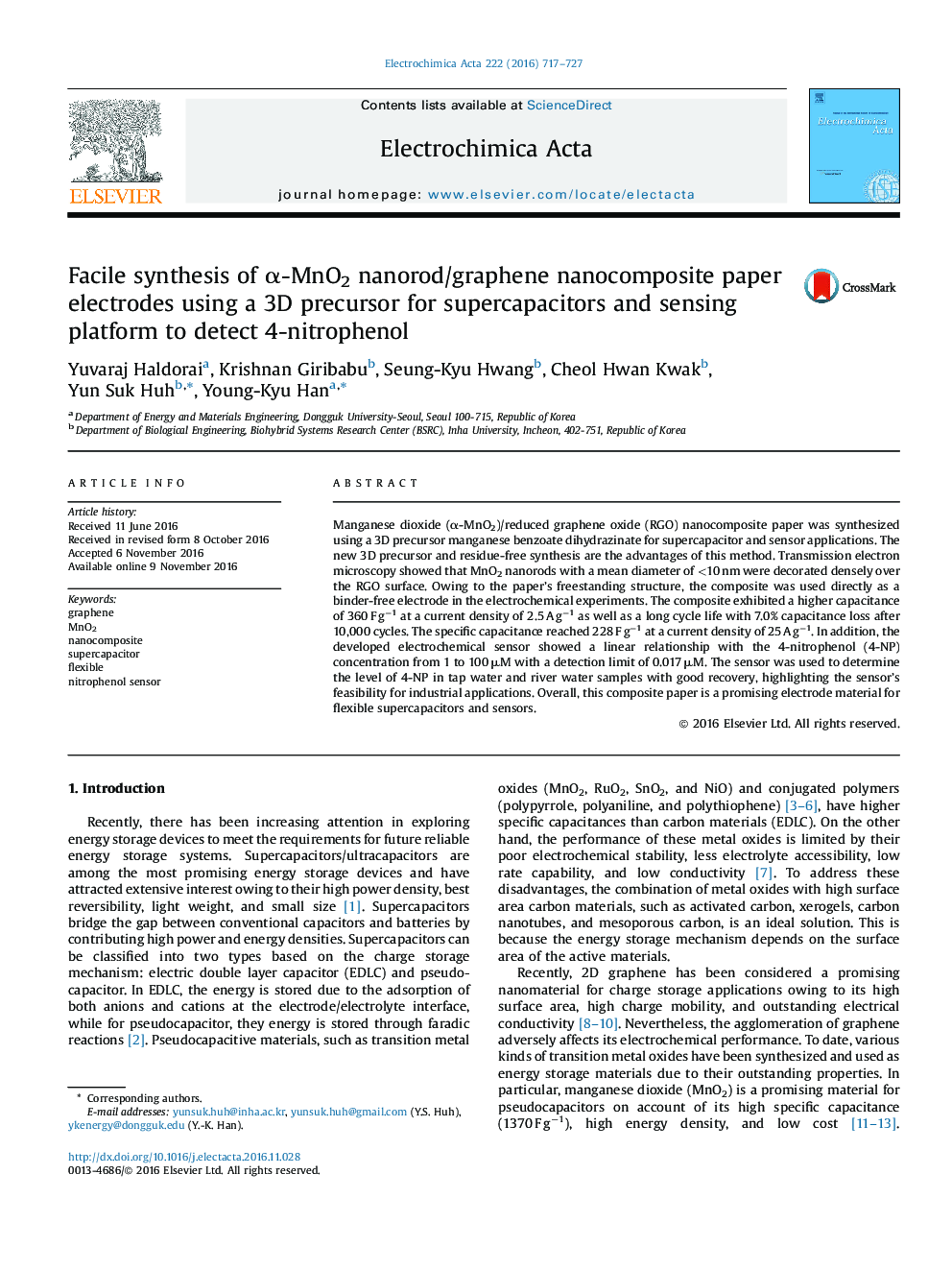| کد مقاله | کد نشریه | سال انتشار | مقاله انگلیسی | نسخه تمام متن |
|---|---|---|---|---|
| 6472681 | 1424135 | 2016 | 11 صفحه PDF | دانلود رایگان |

- Facile synthesis of MnO2 nanorod/RGO composite.
- Composite showed higher capacitance of 360Â FÂ gâ1.
- Excellent cyclic stability and reversibility.
- Good sensitivity and low detection limit of 4-nitrophenol.
- High stability and reproducibility of the electrode
Manganese dioxide (α-MnO2)/reduced graphene oxide (RGO) nanocomposite paper was synthesized using a 3D precursor manganese benzoate dihydrazinate for supercapacitor and sensor applications. The new 3D precursor and residue-free synthesis are the advantages of this method. Transmission electron microscopy showed that MnO2 nanorods with a mean diameter of <10 nm were decorated densely over the RGO surface. Owing to the paper's freestanding structure, the composite was used directly as a binder-free electrode in the electrochemical experiments. The composite exhibited a higher capacitance of 360 F gâ1 at a current density of 2.5 A gâ1 as well as a long cycle life with 7.0% capacitance loss after 10,000 cycles. The specific capacitance reached 228 F gâ1 at a current density of 25 A gâ1. In addition, the developed electrochemical sensor showed a linear relationship with the 4-nitrophenol (4-NP) concentration from 1 to 100 μM with a detection limit of 0.017 μM. The sensor was used to determine the level of 4-NP in tap water and river water samples with good recovery, highlighting the sensor's feasibility for industrial applications. Overall, this composite paper is a promising electrode material for flexible supercapacitors and sensors.
126
Journal: Electrochimica Acta - Volume 222, 20 December 2016, Pages 717-727